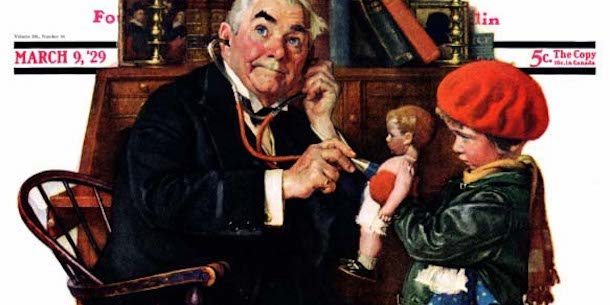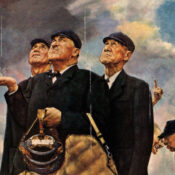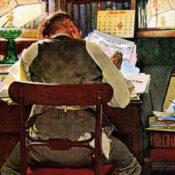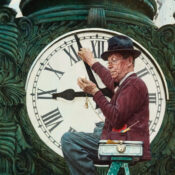These classic Saturday Evening Post covers show what happens when you mix kids and doctors. Results may vary!
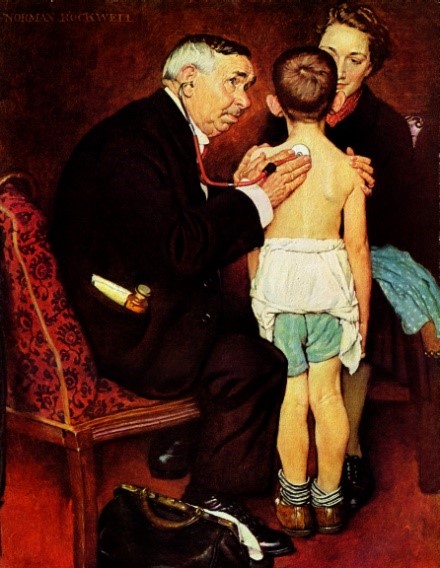
Norman Rockwell
December 24, 1938
This image by Norman Rockwell accompanied a Stephen Vincent Benét story, “Doc Mellhorn at the Pearly Gates.” The image beautifully captures the relationship between doctor and patient. Shortly after its appearance, Upjohn commissioned Rockwell to create a series of advertisements for them.
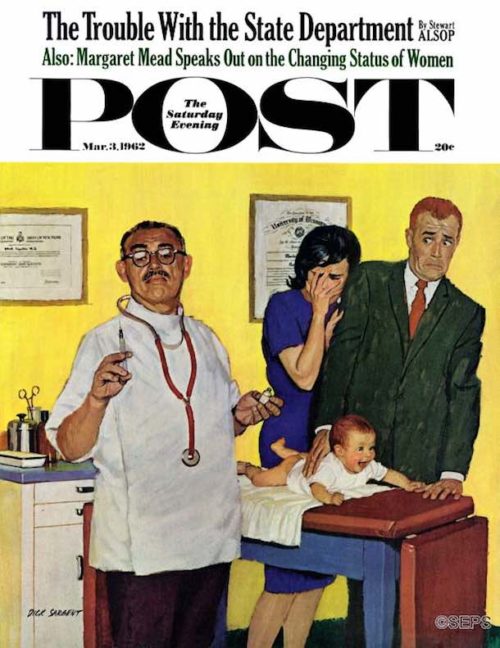
Richard Sargent
March 3, 1962
This scene will surely touch a responsive chord in every parent. The idea was suggested to artist Dick Sargent by Post readers Walter and Barbara Jackowski of Danville, Illinois, shortly after they had taken their baby, Stanley, for his first shot. Small Stanley put his parents to shame too, for he continued to gurgle and smile throughout the Terrible Ordeal. Sargent tells us that hundreds of readers have sent him suggestions for covers, but this was the first one he was able to use.
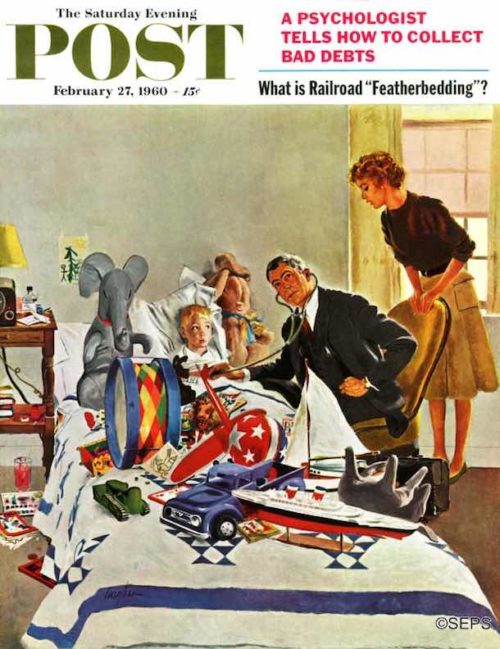
George Hughes
February 27, 1960
Small children, when committed to sickbeds, demand the comfort of a few favorite toys, and it’s the doctor’s job to find a patient amid the clutter. This boy recently squandered his life’s savings on two ice cream sodas and four candy bars, which proved to be at least one soda and three candy bars too many. Now he’s wondering if the doctor can learn the awful truth by tuning in on his stomach rumblings. Perhaps this doctor will inspire our young patient to be a physcian when he grows up — and his stomach settles down.
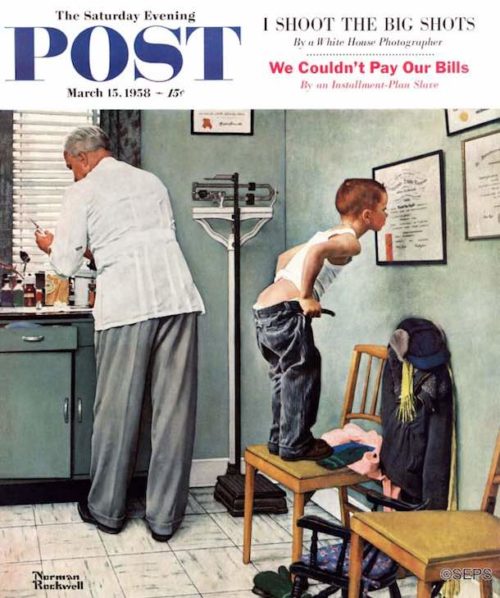
Norman Rockwell
March 15, 1958
The young model for this painting was Edward F. Locke of Stockbridge, MA. The photo below shows Norman Rockwell writing him a check. The doctor was the actual town physician in Stockbridge — Dr. Donald E. Campbell. “He’s a fine, dedicated doctor,” said Rockwell, “who seldom sleeps.” Incidentally, Edward didn’t really get a shot from the doctor, only from a camera.
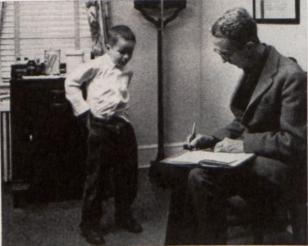
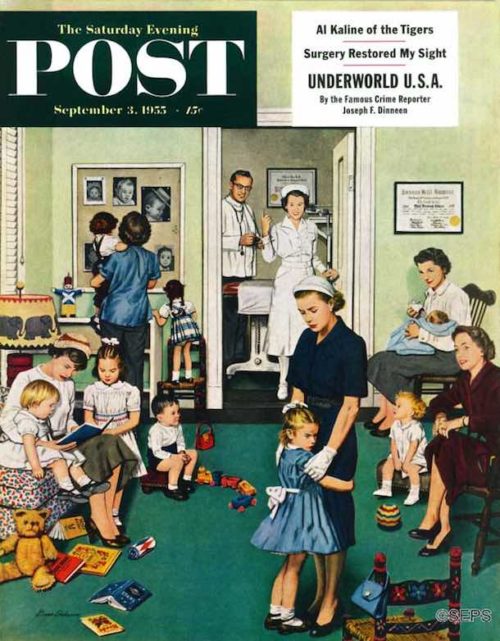
Stevan Dohanos
September 3, 1955
All of the children seem completely delighted to be at this doctor’s office, except for the one little girl whose name was just called. No amount of books, toys, and playmates can fool her; she knows what’s next.
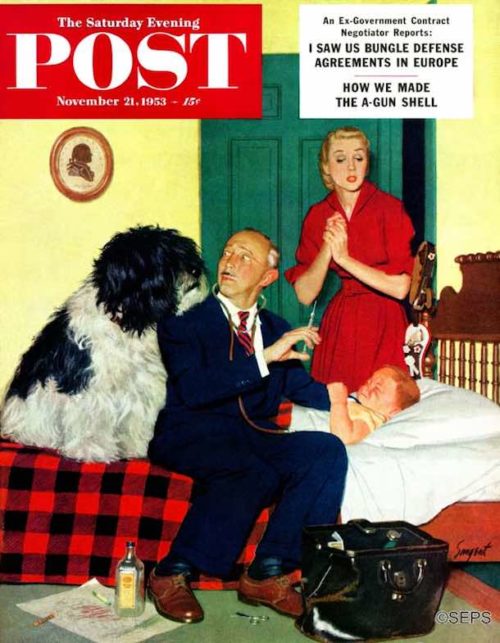
Richard Sargent
November 21, 1953
Our furry friend is planning to either bite the doctor for causing pain to his little master or lick his mustache; there’s no way of knowing which way it will go. Old-fashioned, pre-needle doctors were the smart ones; they prescribed a treatment and departed forthwith, leaving mother holding the spoon, the dog, and the kicking patient.
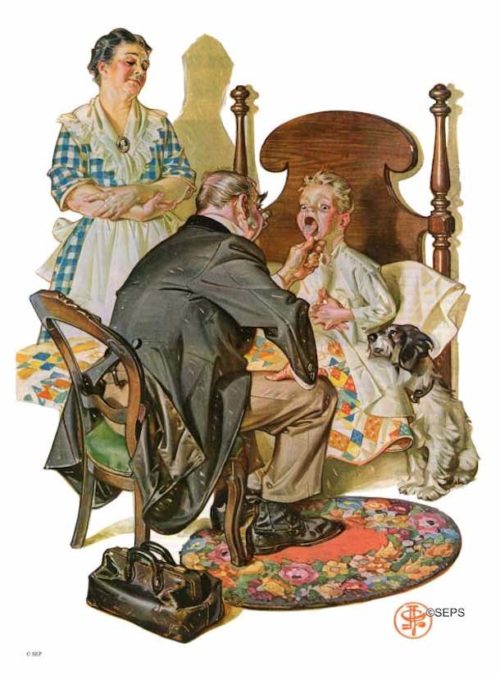
J.C. Leyendecker
November 22, 1930
Everyone seems concerned in this situation, the dog most so. Let’s hope it’s nothing too serious. While penicillin was discovered in 1920, it wasn’t used widely until 1942.
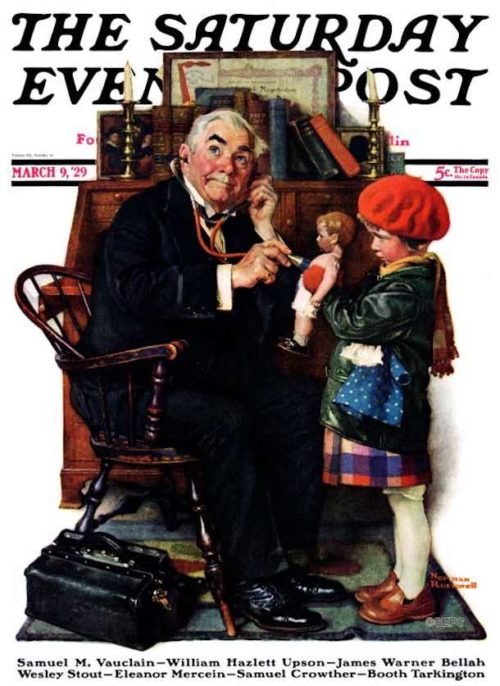
Norman Rockwell
March 9, 1929
This 1929 cover is one of the most beloved of all time. If you’ve ever had to wait in a doctor’s office, you’ve probably had time to study this scene. The “doctor” was model Pop Fredericks, who had ambitions of becoming an actor, a dream that never quite panned out. But Pop was immortalized on Post covers if not the stage. Rockwell used him as a model time after time. He appeared on the canvasses of the great artist as a cellist, a tourist, a politician, Ben Franklin, Santa Claus, and, of course, one of America’s most beloved doctors.
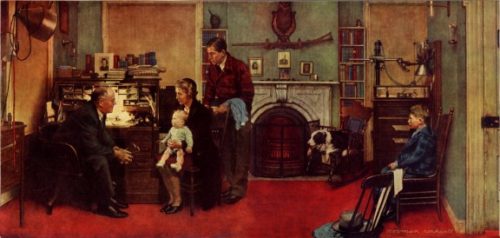
April 12, 1947
Norman Rockwell
Click to Enlarge
This was one in a series of paintings Rockwell completed in the 1940s, including “Norman Rockwell Visits a Country Editor” and “Norman Rockwell Visits a Country School.” For this painting, Rockwell portrayed his home town’s family physician, George A. Russell. In this room he heard a quarter century of troubles, and delighted Rockwell by an occasional shrewd bull’s-eye diagnosis. “The only trouble with you,” he told one woman during the cool Arlington summer, “is that you have too damn many guests.”
Become a Saturday Evening Post member and enjoy unlimited access. Subscribe now
